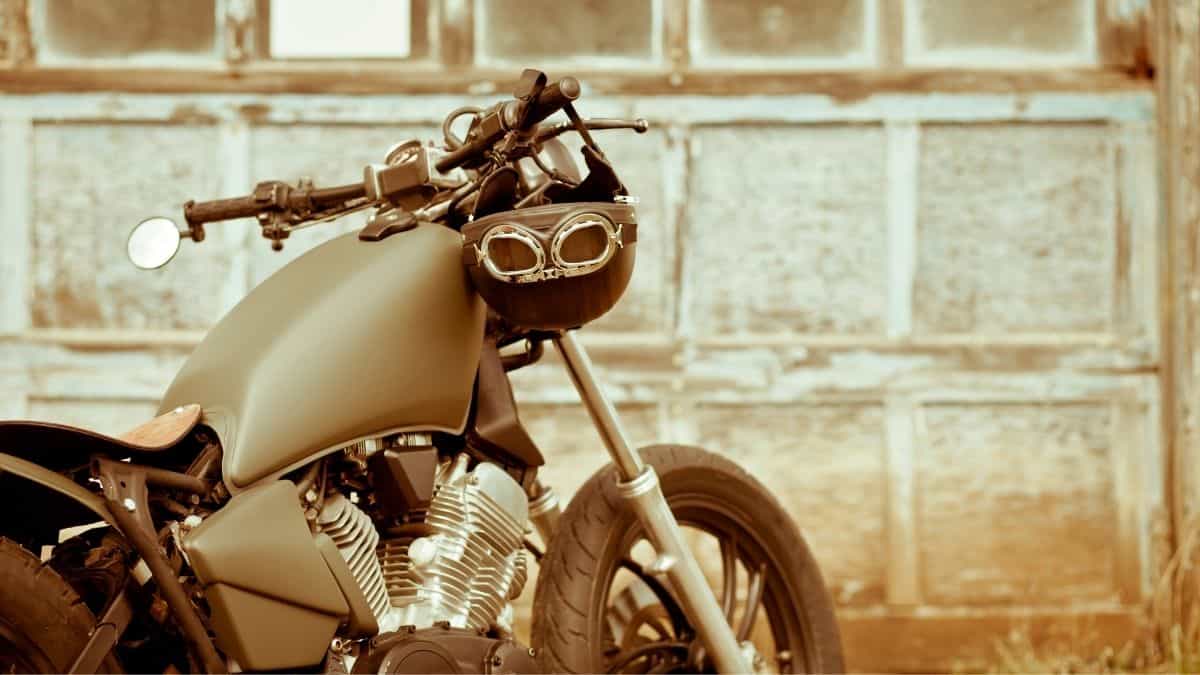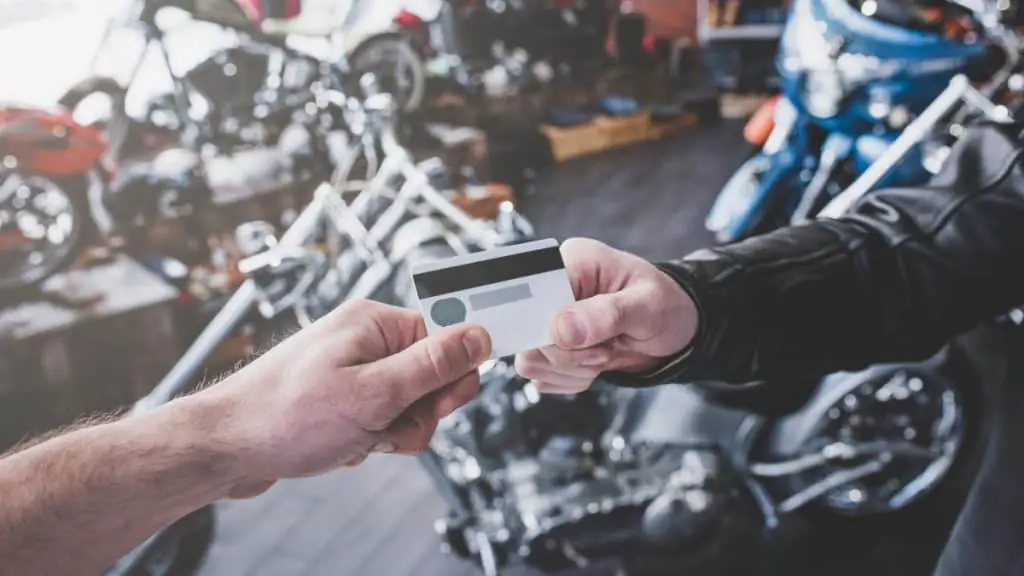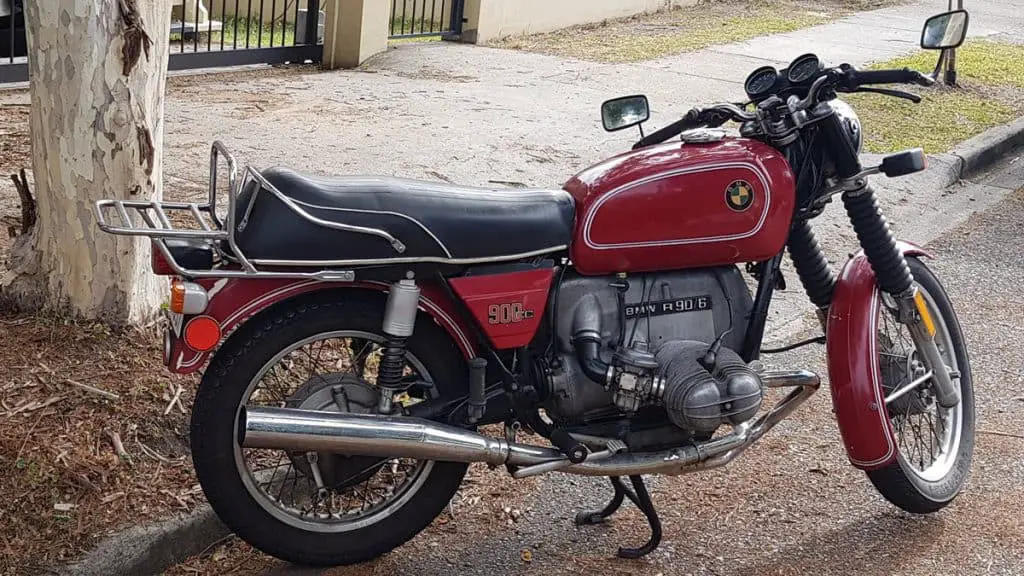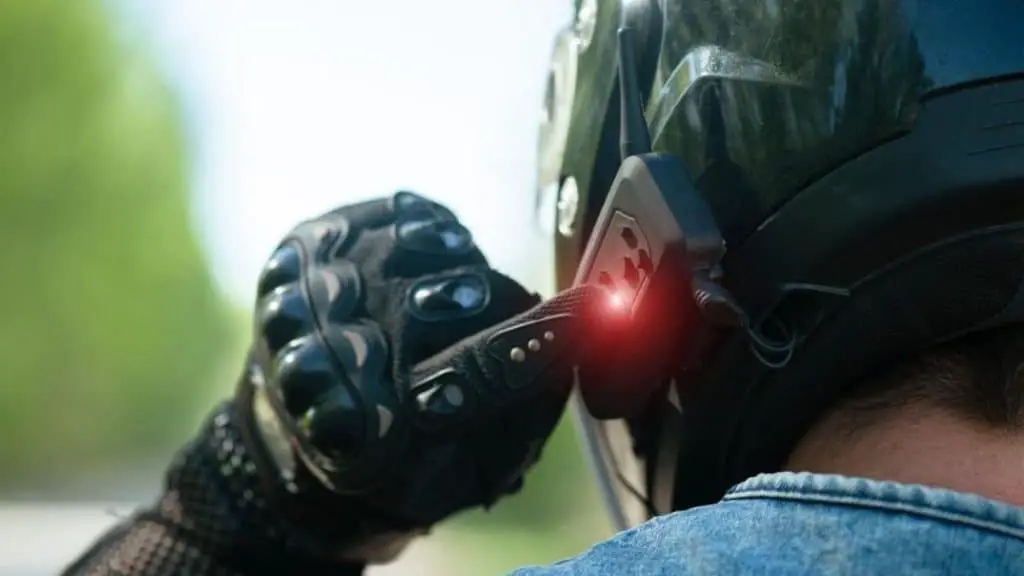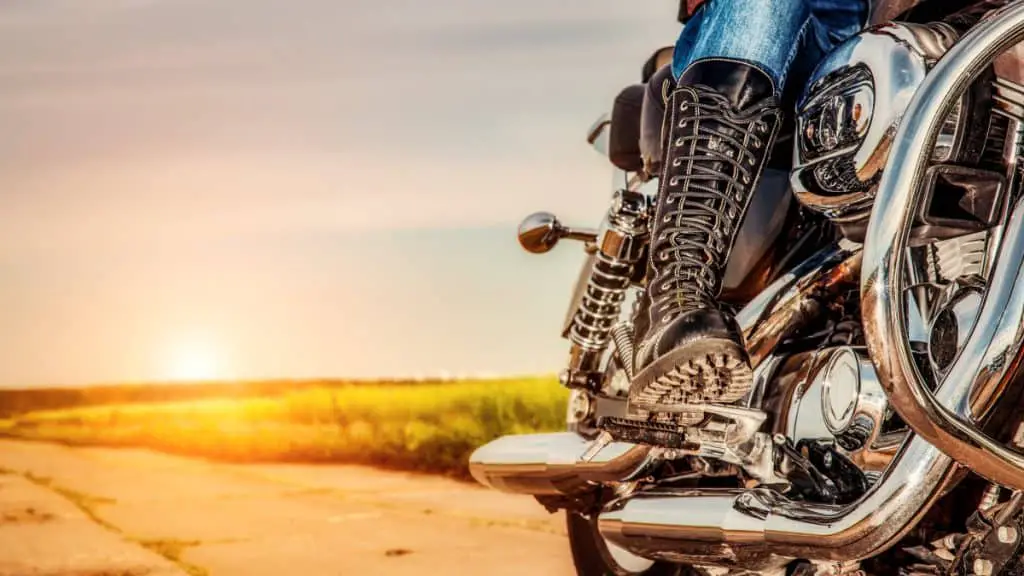How Long Do Motorcycles Last (+ FREE Motorcycle Life Expectancy Checklist)
Look, there is no straightforward answer for how long you can expect your motorcycle to last. It would be the same as asking a person:
“How long should humans live?” (65 is enough for me.)
And getting an answer: “Your mileage may vary!”
Yes, I know, everything comes to MAINTENANCE, MAINTENANCE, MAINTENANCE. I’m so sick of that word (**rolling my 20K mileage Chinese bike to scrapyard**).
Know this.
A maintained poorly-built bike is still a poorly-built bike. No amount of premium oil or fuel can change that. It will break like a Jenga tower.

So, how long do motorcycles last, and what’s their REAL life span?
Wait, here is a better one: How much service can I obtain from a motorcycle?
Getting a decade or so of service and 100K mileage on your bike is a DAMN GOOD deal. (Wish I had scored that one!)
Motorcycles with higher mileage that are used, NOT abused will show fewer problems than the ones with low mileage. (**Scraping exploded pieces of valves from the ground**)
Wait. How??
Motorcycles break due to lack of use, not from a lot of use (I’m not kidding even). They are purposely built for high performance and require frequent fresh oil and fuel. That’s the essence of a motorcycle!
If you don’t use your bike for months, and then you want to travel 300 clicks (miles, I mean) over a single weekend, you can FORGET about it. Mission Imposibru!
It’s like asking a heavy lifter to bench press two V12 engine blocks, without any prep or constant workout.
Running your motorcycle and its engine prevents the gunk from pilling up in the carburetors/jets and keeps the oil fluid.
Piston rings play a big role too! Having a motorcycle stored for a long time makes the piston rings corroded and lose their sealing feature!
2 Things to Know How Long Do Motorcycles Last
Did you know that motorcycles have two different lifespans? (Almost like cats, but with wheels.)
There is a difference between manufacturers’ supported lifespan and consumers’ handling lifespan. (**Searching for the shop that sells motorcycle valves**)
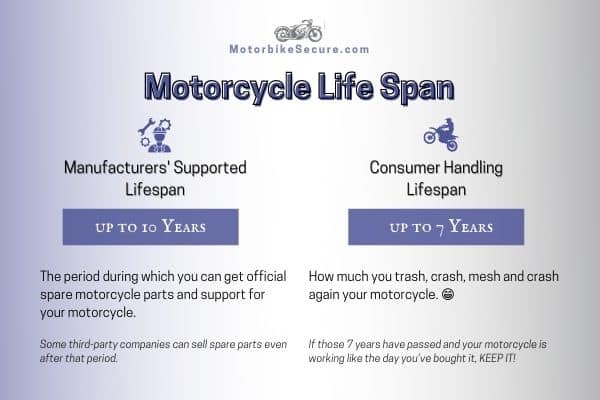
Manufacturers’ supported lifespan of a motorcycle refers to how long those smart engineers have calculated your bike should last. Spare-part production and their life cycle come included!
Manufacturers’ supported lifespan is 10 years (I’m getting a feeling whoever did these calculations doesn’t ride a motorcycle?!).
In plain English, 10 years is the period during which you can get official spare motorcycle parts and support for your motorcycle. Some third-party companies can sell spare parts even after that period. But if it doesn’t say Honda on it, I’m not buyin’! (**bargaining at the flea market for aftermarket valves**)
Consumer handling lifespan is how much you trash, crash, mesh and crash again your motorcycle!
If it’s used as a mule on the rough road, without proper maintenance (there’s that word again), don’t expect to get 10 years.
5 to 7 years tops!
If those 7 years have passed and your motorcycle is working like the day you’ve bought it, keep it! It’s a sign it’s a worthy motorcycle. Push it to that 10-year-mark, with one eye on a new motorcycle. That way, you can sell it as soon as the first issue arises to some newbie that comes along.
One Secret Thing That Shortens Your Motorcycle Life Span
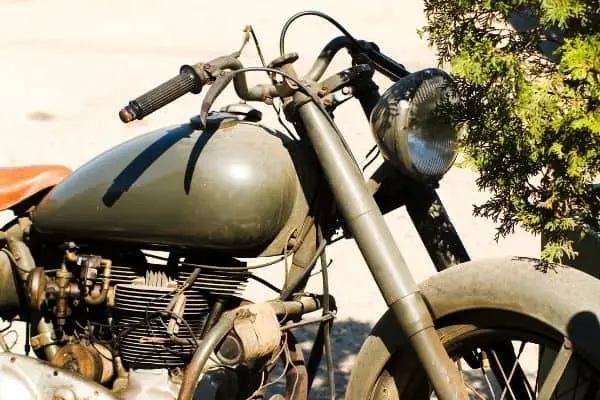
High cold starts!
How?
Listen to this.
The harder you push your engine when cold, the hotter it gets. When asked to give 100% of its performance from cold, it will overpower the oil instantly. Wear happens when cold oil hasn’t been heated up to flow around the engine fast enough.
Cold oil is like maple syrup, it flows slowly and sticky. Being cold, it spends more time around heated parts, cooks, and stops lubricating. That’s how you get metal to metal wear.
Overheated oil = NO LUBRICATION!
Engine size plays a big role in high-cold starts, too!
You should understand that smaller motorcycles (125cc or 250cc ones) have to work harder to do what litre motorcycles (1000cc and beyond) consider a walk in the park.
When a 125cc motorcycle is asked to give its MAX 10 HPs to do 60 mph, it will be at maximum output. It produces a ton of heat at that moment and wears damn fast until its oil is fully hot.
When 1000cc motorcycles or even 600cc ones are asked to give that same output to do 60 mph, they won’t feel a thing! The oil in these motorcycles doesn’t fail that much.
Modern synthetic and semi-synthetic oils come as a lifesaver to smaller engines. They are vastly better at flowing when cold, and perform better at high temps. But that’s a completely different topic. (**pouring vegetable oil into his motorcycle engine**)
Wait.
Does that mean smaller engines have a shorter life expectancy?
Not really. We tend to be more aware of all the things called MAINTENANCE (winterization, fluid changes, valve adjustment, etc.) than car drivers. They don’t want to be bothered with anything that includes a wrench or the word oil!
Yes, there are riders with a “get in and drive” mentality, but we don’t want to talk about those outcasts here.
I know several people who have started on 125cc bikes and put 70 or even 80,000 miles on them, with NO real impact on the bike’s reliability.
I might neglect the word MAINTENANCE, but that’s one kind of Elixir of Youth to your small cc bike.
How to Know If a Bike Is Going to Live Longer? Motorcycle Life Expectancy Checklist!
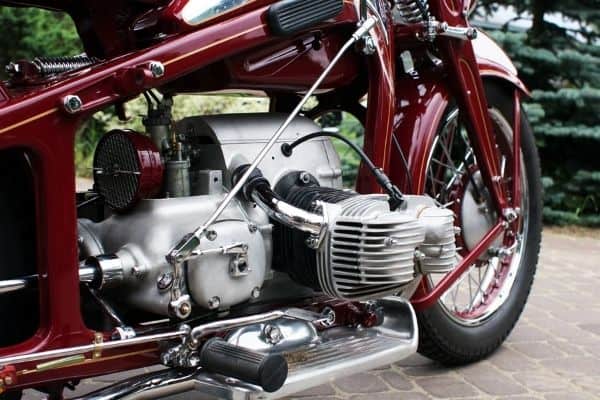
We all want to push the MAXIMUM out of our motorcycles before they are ready for the scrapyard. No matter what amount of cc they have.
Here are points that will help you know how long your motorcycle is going to last:
If the answers are YES, except in the first and last case, expect your motorcycle to pull that EPIC milestone of 100 or even 150,000 miles!
Why Do Different Motorcycles Live Longer?
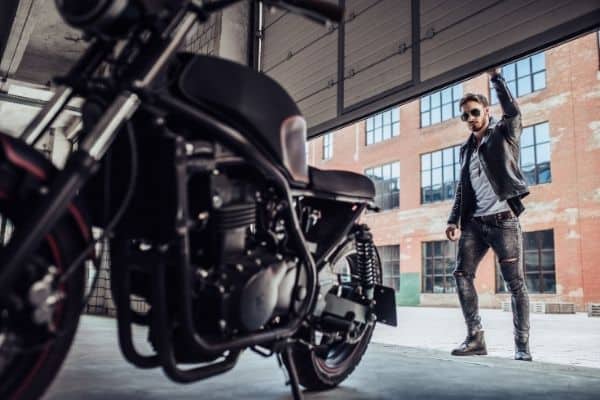
No, it’s not the supreme-expensive-synthetic oil or a high-octane fuel you pour into your bike. It’s something more BASIC.
It’s about the design.
No, I’m not talking about the flashy over-designed-two-wheeled-machine you have on your Tinder profile. I’m talking about the manufacturer’s design.
How and how well a motorcycle engine is designed sets your motorcycle’s life. Like I said – a maintained poorly-built bike is still a poorly-built bike.
And some manufacturers are TERRIBLE at this game.
The brands that don’t offer high-performance motorcycles sell short-lived motorcycles. Those engines are low-powered and made with dirt-cheap construction.
Brands like Royal Enfield, BMW, and other Japanese (Honda and such) marks have the best motorcycle designs! Period!
(**”Haha!” Nelson laughing at Yamaha for not being the best.**)
Yes, I know. I said Royal Enfield. The Indians are beating well-designed Germans in how tight they build their motorcycles. It’s just so unbelievable!
Those marks have the best engine configuration (V-twin, in-line, boxer, etc.) and cooling mechanism (improved air-cooling and water cooling).
Some motorcycles are sooo over-designed that will most likely be on the road when the Zombies take over the planet. Honda Goldwing, Suzuki Bandit, or BMW GS fall into that group.
Harley Davidson, an Icon of Longevity! Or Maybe Not?
Nothing screams FREEDOM more than rolling your Harley on a highway! But how long does it last?
Harley Davidson has done a good deal of making their bikes last longer than other manufacturers. From ’70s junk to 21st century improved machines, Harley is a good starting investment when looking for longevity!
A couple of months ago I watched a documentary of a Harley rider putting a whopping 1,000,000 miles mark on his bike. Yep, it’s a 7 figure number. Over that period the engine was overhauled 9 times and still running strong, to this day!
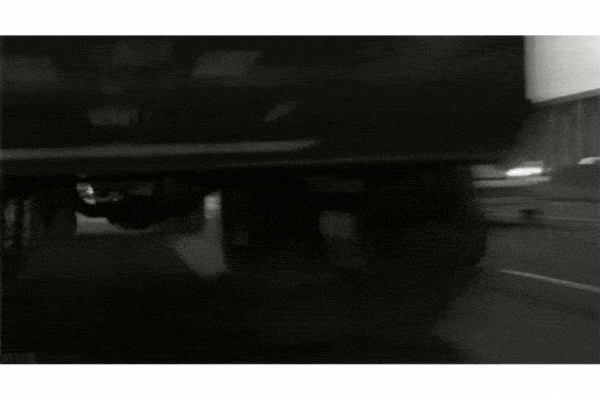
Takeaway?
If you take care of your Harley, it may easily outlast YOU.
If your beneficiary takes it over, it will outlast them too (and may end up in a Harley museum, like these beauties did)! Metal corrodes without care and maintenance, but do those two, and metal can last thousands of years.
Makes you wonder, is Harley eternal?
Well…
NO!
Where Harley fails, is in details (devil’s in the details, right):
But Harley engines as machines are the meaning of the word reliability.
Summary?
A quote will say it all!
“If you want to leave a legacy, buy a Harley!”
~ Average middle-aged Harley rider
Related post: Harley-Davidson Panhead vs Shovelhead: Evolution of a Species

